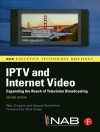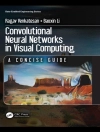Learn how radio access network (RAN) slicing allows 5G networks to adapt to a wide range of environments in this masterful resource
Radio Access Network Slicing and Virtualization for 5G Vertical Industriesprovides readers with a comprehensive and authoritative examination of crucial topics in the field of radio access network (RAN) slicing. Learn from renowned experts as they detail how this technology supports and applies to various industrial sectors, including manufacturing, entertainment, public safety, public transport, healthcare, financial services, automotive, and energy utilities.
Radio Access Network Slicing and Virtualization for 5G Vertical Industries explains how future wireless communication systems must be built to handle high degrees of heterogeneity, including different types of applications, device classes, physical environments, mobility levels, and carrier frequencies. The authors describe how RAN slicing can be utilized to adapt 5G technologies to such wide-ranging circumstances.
The book covers a wide range of topics necessary to understand RAN slicing, including:
* Physical waveforms design
* Multiple service signals coexistence
* RAN slicing and virtualization
* Applications to 5G vertical industries in a variety of environments
This book is perfect for telecom engineers and industry actors who wish to identify realistic and cost-effective concepts to support specific 5G verticals. It also belongs on the bookshelves of researchers, professors, doctoral, and postgraduate students who want to identify open issues and conduct further research.
表中的内容
About the editors
Preface
Part 1: Waveforms and Mixed-Numerology
Ch 1: ICI Cancellation Techniques Based on Data Repetition for OFDM Systems
Ch 2: Generalized Frequency Division Multiplexing: Unified Multicarrier Framework
Ch 3: Offset Quadrature Amplitude Modulation based Filter Bank Multicarrier System
Ch 4: Low Electromagnetic Emission Wireless Network Technologies 5G and Beyond
Ch 5: Filtered OFDM: an Insight into Intrinsic In-Band Interference
Ch 6: Multi-Numerology Waveform Parameter Assignment in 5G
Part 2: RAN Slicing and 5G vertical industries
Ch 7: Network Slicing with Spectrum Sharing
Ch 8: Access Control and Handoff Policy Design for RAN slicing
Ch 9: Robust RAN Slicing
Ch 10: Flexible function split over Ethernet Enabling RAN Slicing
Ch 11: Service oriented RAN Support of Network Slicing
Ch 12: 5G Network Slicing for V2X Communications: Technologies and Enablers
Ch 13: Optimizing Resource Allocation in URLLC for Real-Time Wireless Control Systems
关于作者
LEI ZHANG, Ph D, is Senior Lecturer at the University of Glasgow, UK. He received his Ph D degree from the University of Sheffield, UK. He was a research fellow in the 5G Innovation Centre (5GIC) at the Institute of Communications (ICS), University of Surrey, UK. His research interests include wireless communication systems and networks, blockchain technology, radio access network slicing (RAN slicing), Internet of Things (Io T), multi-antenna signal processing, MIMO systems, and many more.
ARMAN FARHANG, Ph D, received his Ph D from the Trinity College in Dublin, Ireland. He is currently an Assistant Professor in the Department of Electronic Engineering at Maynooth University, Ireland. His research interests and activities are in the broad area of signal processing for communications, waveform design, signal processing for multiuser and multiple antenna systems.
GANG FENG, Ph D, is a Professor at the University of Electronic Science and Technology of China (UESTC), China. He received his MEng degree in Electronic Engineering from UESTC and his Ph D in information engineering from the Chinese University of Hong Kong.
OLUWAKAYODE ONIRETI, Ph D, is a Lecturer at the University of Glasgow, UK. He received an MSc degree in mobile and satellite communication and a Ph D in Electronics Engineering from the University of Surrey, Guildford, UK.












